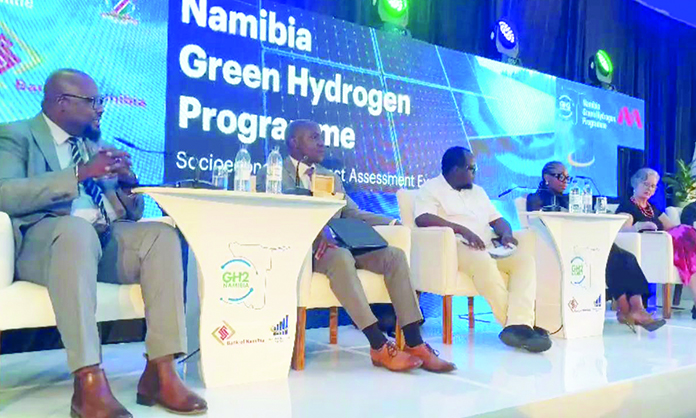Rich Namibians are the ones most likely to benefit from additional income from the hydrogen industry.
This is according to preliminary projections presented by Monasa Advisory & Associates researcher Mwala Lubinda at an event titled ‘An Economic Outlook: Assessing the Socio-Economic Benefits of Namibia’s Hydrogen Industry’ in Windhoek yesterday.
According to Lubinda’s projections, N$87.9 billion of additional income per year will be generated once the hydrogen industry is operational.
Of this sum, 59% will go to the most affluent quintile of urban households, while another 18% will go to the most affluent quintile of rural households.
The second quintile of urban households will gain 10% of the additional income, and the middle quintile of urban households will receive 3%, according to the model presented by Lubinda.
According to Lubinda, during the investment phase N$99.4 billion of additional income will potentially be generated. This phase will last until 2030 and in some cases, until 2040.
Here too, the sum will mostly benefit the most affluent quintiles of urban and rural households, with the groups gaining 57% and 17% of the sum, respectively. The second and middle quintiles of urban households stand to gain 11% and 4%, respectively.
Eline van der Linden, head of impact and environmental, social and governance at the government’s green hydrogen commission, pointed out that reallocation within families will likely mitigate the uneven distribution.
“Household redistribution will be the initial trickle-down redistribution,” she said during a panel discussion at the event.
During the investment phase, 102 000 jobs could be created, Lubinda forecast. Of these, 55% will be in the construction sector and 10% each in rail transport and wholesale/retail trade.
Investments in green hydrogen infrastructure (N$173 billion), rail (N$16 billion), ports (N$6 billion) and electricity (N$3.4 billion) as well as industrial zones (not yet calculated) will be required.
In the operational phase, 30 000 employment opportunities per year could be sustained.
Broken down by sector, 20% of the jobs are attributable to green hydrogen production activities, 12% to service activities (excluding administrative and support services) and activities of households as employers, while construction and wholesale/retail trade would gain 11% each.
Most of the jobs will require skilled or semi-skilled workers, at 59% and 39.5%, respectively. Just 1.5% of jobs created will be suitable for unskilled workers.
University of Namibia senior lecturer of physics and renewable energy Zivayi Chiguvare cautioned against hiring insufficiently qualified workers.
“Let us not compromise the safety and integrity of the whole hydrogen system by employing unqualified people,” he said during the panel discussion.
He also stressed that there will be opportunities to upskill those with only minor qualifications.
In terms of overall economic benefits, Lubinda projects N$129 billion to be added to Namibia’s gross domestic product (GDP) during the investment phase.
Once operational, the green hydrogen industry could add N$177 billion per year to the Namibian economy, his model predicts.
According to the World Bank, Namibia’s GDP amounted to US$12.35 billion in 2023, which is roughly equivalent to N$223.75 billion.
Stay informed with The Namibian – your source for credible journalism. Get in-depth reporting and opinions for
only N$85 a month. Invest in journalism, invest in democracy –
Subscribe Now!










